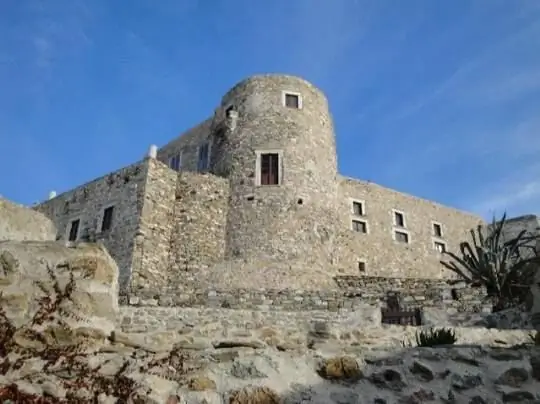
Description of the attraction
One of the main and most interesting sights of the Greek island of Naxos is undoubtedly Castro, a medieval fortress built by the Venetians. A grandiose fortification rises on the top of a low hill about 30 m high in the historic center of the island's capital of the same name.
At the beginning of the 13th century, after the Fourth Crusade, the Venetians, led by the merchant Mark Sanudo, conquered part of the islands of the Cyclades archipelago, on whose lands the Duchy of Naxos (Duchy of the Archipelago) was founded with the main residence on the island of Naxos. Marco Sanudo became his first duke. Actually, according to his decree, an impressive fortress was built on the ruins of the ancient acropolis, which became an important administrative, cultural and religious center for the Venetians.
The construction of the fortress began in 1207. During the work, various architectural fragments of more ancient structures were mainly used as building materials, including marble blocks from the destroyed temple of Apollo. The fortress was a huge pentagonal structure with three entrances and seven defensive towers. Behind the massive fortress walls was a well-fortified medieval settlement with labyrinths of narrow cobbled streets with multiple arched ceilings, old mansions (on the doors of some of them you can still see the family coats of arms of the Venetian nobility) and churches.
One of the most interesting places of the old fortress, of course, is the old mansion belonging to the Della Rocco-Barosi family, within the walls of which there is now an excellent Venetian Museum. During the summer, it hosts a wide variety of cultural events. Of great interest are the Archaeological Museum located in the building of the old school, which is rightfully considered one of the best on the islands of the Cyclades archipelago, the Catholic Cathedral (13th century) on the main square of Castro and the tower of Crispi (Glezos).
The fortress of Naxos is fairly well preserved to this day, and is an excellent example of Venetian defense architecture, as well as an important historical monument. Walking along the narrow streets of Castro, you will get a lot of pleasure and impressions and fully experience the atmosphere of a real medieval city.






